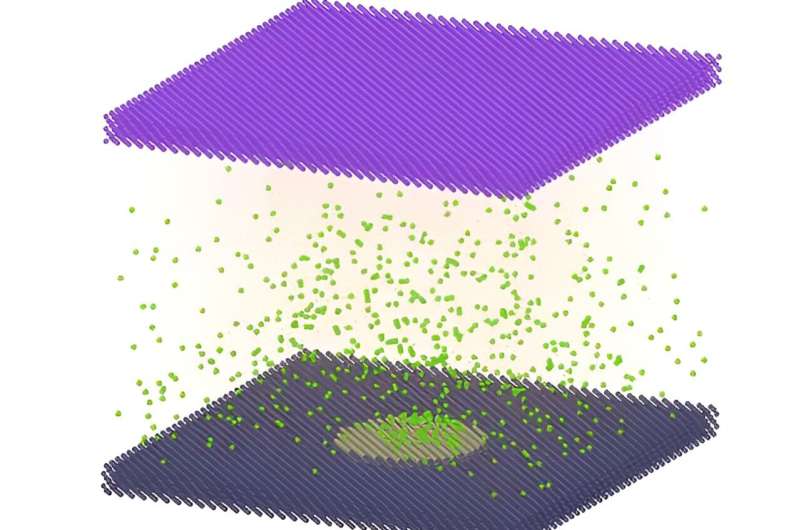Nanobubble research to improve green hydrogen production

In a novel study, in Proceedings of the National Academy of Sciences, researchers from the University of Twente have made significant strides in understanding the behavior of micro- and nanobubbles on electrodes during water electrolysis. This process is crucial for (green) hydrogen production. These tiny bubbles form on the electrodes, blocking the flow of electricity and reducing the efficiency of the reaction.
A renewable hydrogen economy significantly reduces the impact of global warming compared to a fossil fuel economy. However, the production of hydrogen is significantly impeded by bubbles at the micro- and nanoscale. Therefore, researchers at the University of Twente try to precisely understand how these tiny bubbles form on and stick to the electrodes, to finally get rid of them.
Supported by advanced molecular simulations, Detlef Lohse and his team developed a theory that can successfully predict the electrical current density needed to let the nanobubbles grow uncontrollably and detach, thus freeing the electrode for further hydrogen production.
This finding is pivotal as it allows for the prediction and control of bubble behavior, ensuring that electrolysis can proceed with minimal disruption. The research builds upon the established stability theory for surface nanobubbles (Lohse-Zhang model) and extends it to include the electrolytic current density to predict the bubble behavior.
With the improved knowledge, scientists and engineers can now work towards enhancing the detachment of bubbles. Besides improving the overall efficiency of water electrolysis, this work can be used also for other systems where gas bubbles are formed, such as in catalysis.
More information: Yixin Zhang et al, Threshold current density for diffusion-controlled stability of electrolytic surface nanobubbles, Proceedings of the National Academy of Sciences (2024).
Journal information: Proceedings of the National Academy of Sciences
Provided by University of Twente



















